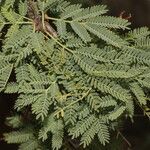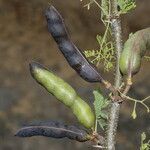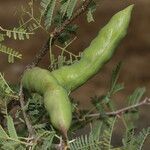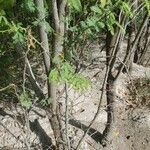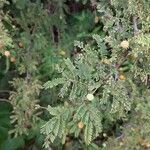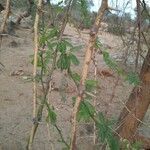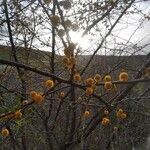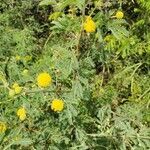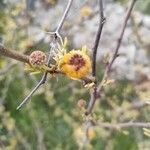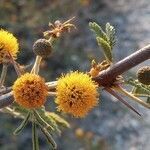Shrub or small tree to 4 m high; young branchlets grey to reddish-brown or purplish, epidermis not obviously peeling off, with numerous somewhat transversely elongated lenticels, glabrous or almost so. Stipules spinescent, in pairs, usually short, up to 1.5(3) cm long, straight, slender, never inflated; 'ant-galls' and other prickles absent. Leaves bipinnate: petiole sparingly to ± densely pubescent, usually with a small gland; rhachis sparingly to ± densely pubescent, often with a small gland below the junction of the top pinna pair; pinnae 2-7 pairs; leaflets 10-21 pairs, 2-7 x 0.75-1.75 mm, midrib and lateral nerves visible and somewhat raised beneath, glabrous throughout or with few inconspicuous marginal cilia. Inflorescences capitate, on axillary peduncles, solitary or in pairs or threes. Flowers bright golden-yellow, sweetly scented; peduncles sparingly to ± densely pubescent basally, sparingly glandular; involucel apical. Calyx and corolla glabrous except for the apices of the lobes. Pods dark brown to blackish, 4-7.5 x 0.9-1.5 cm, straight or curved, subterete and turgid, glabrous, tardily dehiscent, finely longitudinally striate. Seeds chestnut-brown, 7-8 x 5.5 mm, elliptic, thick, only slightly compressed; areole 6-7 x 4 mm.
